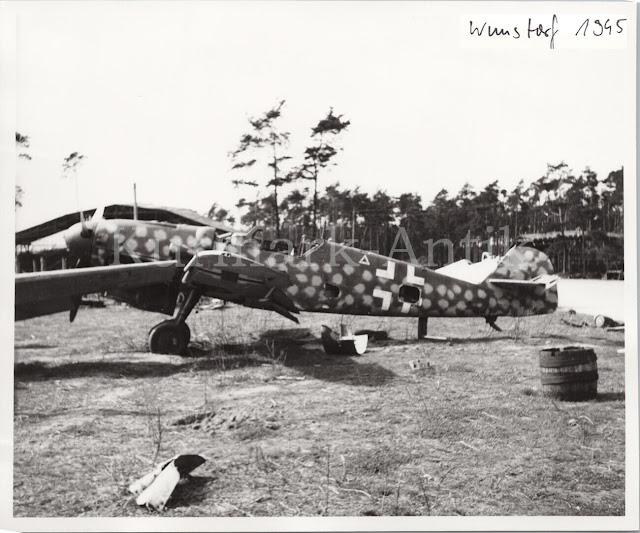no preamble, no intro, but a heads-up for a must-read piece written by 'Drix' over on his aviation blog
Drix writes in French so you may need to hit the 'translate' button if using Google
https://aviadrix.blogspot.com/2024/07/le-messerschmitt-262-indispensable.html
And a comment posted by Alain Breton;
" As usual with Drix, an article that sets the record straight. While it is undeniable that German engineers made a major contribution to the development of modern aerospace technologies, it is also true that in many respects they played the role of sorcerer's apprentice, and that their ‘successes’ often owed more to propaganda than to reality.
In the particular case of Messerschmitt, the Luftwaffe's ‘spearheads’ in 1938-1939, the Bf 109 and 110, never had a real successor: the 209/309s were a fiasco that never made it past the testing stage, and the 210/410s were even worse, as they reached the mass production stage despite not being very good - to put it mildly!
The Bavarian manufacturer's real claim to fame was to have pushed the development of a fighter designed around a very small engine (and a very small pilot...) to the furthest limits to produce the 109 K, which was still ‘in the game’ in 1945 - quite an achievement for an aircraft designed 11 years earlier! (In fairness to the British, they did much the same with their Spitfire! )
Turning to the Me 262, it is probable that its 'reputation' owes much to a combination of surprise on the part of the Allies, who were certainly not expecting to find such an aircraft in the middle of their B-17 ‘boxes’, and post-war German accounts, led by Galland, which made it the victim of the Führer's interference with his determination to transform this racing beast into a bomber. The reality is less rosy and the aircraft had weaknesses as well as qualities. It was a machine - with its unresponsive and difficult-to manage engines, huge take-off run, lack of maneuverability - that could really only be entrusted to ‘experienced’ pilots, which was precisely what the Luftwaffe lacked most towards the end of the conflict!
One last detail: the aircraft's ‘large mass’ was a handicap not only once it was in the air, but also from the moment it was manufactured, using materials that were becoming increasingly rare! With this in mind, the decision was taken in the autumn of 1944 to rush through the He 162 with its single engine and mostly wooden construction...."














.jpg)
.jpg)

















